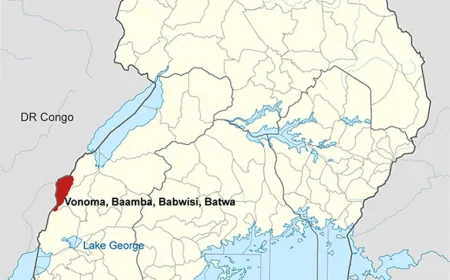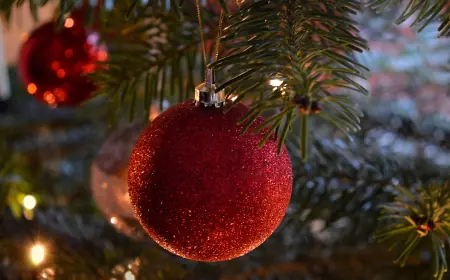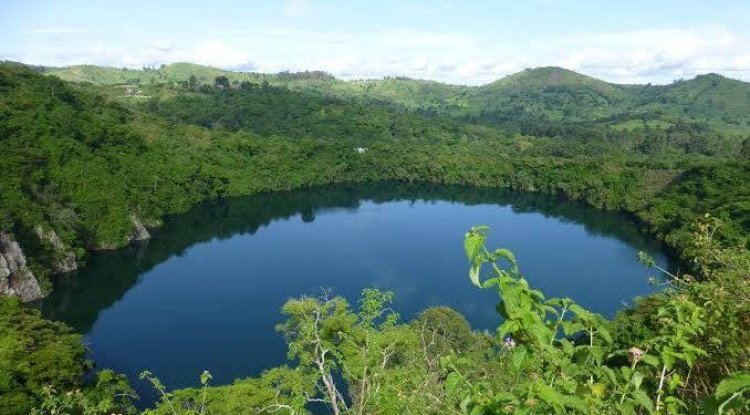The Mabamba Bay Swamp
Uganda's Mabamba Bay Swamp is a great place to see birds because it is a wetland. The Shoebill, Uganda's most popular bird among birders and people who care about the environment, can be seen there. Mabamba Swamp is on the northern side of Lake Victoria, west of Entebbe

The Mabamba Bay Swamp
Uganda's Mabamba Bay Swamp is a great place to see birds because it is a wetland. The Shoebill, Uganda's most popular bird among birders and people who care about the environment, can be seen there. Mabamba Swamp is on the northern side of Lake Victoria, west of Entebbe. It has 2424 hectares of papyrus, water lilies, and other wetland grasses.
A Ramsar site and Important Bird Area is the Mabamba Swamp (IBA). The marsh is home to more than 300 bird species, including many globally vulnerable species, seven of Uganda's twelve Lake Victoria biome-restricted species (including the Papyrus gonolek), and numerous wetland-specific species. From October to March, the marsh is also home to enormous flocks of Palearctic migrants.
Mabamba Swamp is accessible via numerous paths. From Kampala or Entebbe, the quickest approach is via the Nakiwogo landing site in Entebbe, where you take a 10-minute boat ride to Kasanje landing and then drive for about 20 minutes to Mabamba, going through cultivations and open fields that will supply plenty of garden birds.
Via a labyrinth of routes that cut through the dense marshes, birding in the Mabamba Swamp is accomplished from a motorised wooden boat.
The Mabamba Swamp Shoebill Stork
The shoebill, the most sought-after bird by Ugandan bird watchers, is particularly fond of the Mabamba Marsh. The Shoebill is also on the wildlife bucket list of non-birding travellers who are captivated by its odd appearance and enormous size. The shoebill is only found in a handful of locations in Uganda, and Mabamba Swamp is the most accessible and trustworthy location for spotting the bird in Uganda and, arguably, Africa.
Lungfish, or "mamba" in the local language, are the Shoebill's favourite food, and there are a lot of them in Mabamba Swamp. Yet, the lungfish is one of the most sought-after fish among local fishermen, causing competition with the shoebill. The fishermen had long held the notion that spotting a shoebill (known locally as "Boolwe") meant a poor catch that day. Nonetheless, this is not implausible because the shoebill feeds on lungfish, and fish will hide in areas where the shoebill is present. When one set out to fish in the swamp, it was a bad omen for the fisherman to witness a shoebill. They hunted and killed the Shoebills, leading to a fall in their numbers and nearly wiping them out in the wetland. The Shoebill received some protection as the marsh was designated a Ramsar reserve in 2006. Yet, bird observation on the wetland enlightened the fishermen and the community. The fishermen make a lot of money by renting their boats to birdwatchers, and some of them have even received training in birding and guiding. The fishermen now guard the Shoebill so that when they set out to fish and encounter one, they do not come too close so as to disturb it and will gladly notify the tourists of where to observe it. The Mabamba wetland is home to approximately 12 shoebills.

The best time to see the Shoebill in Mabamba Swamp is early in the morning, around 7 a.m., before there is more activity on the wetland. However, by this time, the Shoebill is hunting for lunch fish, which it does by standing still for a long time, or even hours, looking out in the water for fish to cross.
Other Mabamba Swamp birds
African Fish Eagle, Purple Swamp Hen, African Green Pigeon, African Jacana, African Marsh Harrier, African Pygmy Goose, Black Crake, Black Heron, Black-crowned Night Heron, Black-crowned Waxbill, Black-headed Heron, Black-winged Stilt, Blue Swallow, Blue-cheeked Bee-eater Cattle Egret, Common Moorhen, Common Sandpiper, Common Sqacco Heron, Double-toothed Barbet, Glossy Ibis, Goliath Heron, Goliath, Double-headed Heron, Double-headed Tern, and Tern with a Gull Bill Long-tailed Cormorant, Long-toed Lapwing, Hadada Ibis, Harmerkop, Little Egret, and Little Stilt Malachite Kingfisher, Marsh Harrier, Northern Brown-throated Weaver, Papyrus Gonarek: Pied Kingfisher, Pied Wagtail, Pink-backed Pelican, Pin-tailed Whydah, Purple Heron, Red-eyed Dove, Red-headed Love-bird, Shining Blue Kingfisher, Speckled Mousebird, Spur-winged Goose, Spur-winged Lapwing, Swamp Flycatcher, Veilets' Black Weaver, Village Weaver, Water Thicknee, White-faced Whistling Duck, White-throated Bee-eater, White-winged Tern, Winding Cisticola, White-winged Tern,
Attractions for Visitors to the Mabamba Bay Swamp and Wetland
Birding in the Mabamba Bay Wetland
Even before you go into the swamp, you can watch birds at the Mabamba landing site and parking area. The tall trees, shrubs, and thickets are home to a large number of birds and may yield a lifer or rare sighting. Before going on the boat tour of the Mabamba wetland's waterways, you can spend a few minutes to an hour looking at the different habitats.
The beautiful Superb Sunbird is often seen in short trees and bushes, where it feeds on insects on tree branches, before it meets the aggressive Red-chested Sunbird, which is native to the Lake Victoria ecosystem and lives in many places.
On the Mabamba Swamp, birding is conducted from a motorised wooden canoe or boat. There are many boats available, and local guides are happy to take you to see the Shoebill. As soon as you board the boat, the shoebill will be the first bird you should search for. The fishermen that go out early in the morning to find what they got in their nets can help by supplying information about where they observed the shoebill. Otherwise, it will be a game of searching in the familiar grasslands where the Shoebill enjoys hunting.
The best time to observe a shoebill is in the morning, when it is stalking lungfish by staying still for long periods of time—even hours—until some unlucky fish crosses its path. Later in the day, when it gets hot, the shoebill rests by extending its wings and crouching among the grass, making it difficult to locate. It can also be observed flying high in the sky to cool down.
After watching the shoebill, continue birding as usual, investigating the various water channels leading to Lake Victoria and further into the swamp by wading over thick papyrus and grasses.
Purple Swamp Hen, African Marsh Harrier, African Darter, Common Squacco Heron, Purple Heron, Long-tailed Cormorant, Northern Brown-throated Weaver, Yellow-billed Duck, and Malachite Kingfisher are examples of water birds that are difficult to miss.
Around the border of the Mabamba Marsh are bird-watching plantations and thickets.
You could end your birding trip at Mabamba and add to your list of field species by walking along the footpath that goes along the wetland.
This pathway, which begins on your left just before the exit, can be taken after returning from the boat ride through the Mabamba swamp. The path follows the wetland and passes through cultivations and bushland, as well as a plantation of eucalyptus trees that is not particularly diverse but may contain some unexpected woodland species. The trail is pretty extensive, so it can take a couple of hours to reach the point where you've had enough.
Rufous-naped Lark, Sooty Chat, Grassland Pipit, Red-bellied Paradise Flycatcher, Lizard Buzzard, cuckoos, weavers, scrub-robins, sunbirds, etc. are examples of common birds.
Nkima Forest Birding
The Nkima Forest is a small patch of trees on a hill that looks out over the Mabamba marshes. It is around 2 kilometres from the Mabamba landing spot and only 20 minutes on foot. Nkima forest may not be as large as Mabira forest, but it will provide you with an excellent woodland birding experience in addition to your water and field birding at Mabamba wetlands. Nkima Forest is the forest environment included in a day of birding in the Mabamba Wetlands and its vicinity to increase the diversity of bird species. Nkima Woodland will surprise you with certain forest specialties that you won't find in larger forests. According to the dense undergrowth, the woodland is young.
Birding in Nkima Forest begins at the Nkima Forest Lodge atop the hill, from whence many trails extend into the heart of the forest. Many varieties of fruiting and flowering trees and shrubs can be found near the edge of the forest in the clearing surrounding the lodge, which is a good place to start. It is difficult to overlook the Green Sunbird, the Grey-headed Nigrofinch, and the Weyn's Weaver in this location. Other birds, such as cuckoos, hornbills, bee-eaters, wattle-eyes, etc., can be seen if you look higher up in the tall tree canopies. After traversing the grassy clearing at the top of the hill, you can enter the interior of the forest to search for rare items. The timid but vociferous White-tailed Flufftail is at the top of the list, and Nkima Forest is probably your best bet for spotting it (which appears to be about playing its call). Additional species with a high likelihood of being observed in the interior include the Western Nicator, Red-capped Robinchat, Tambourine Dove, Scally Francolin, and more...
The Nkima forest is home to many animals besides birds, such as monkeys, squirrels, bushbabies, etc.
Other Activities When Visiting Mabamba Bay Swamp and Wetland
Spot fishing
Until tourism took over, fishing was the primary activity in Mabamba. Fishing is the region's main source of revenue, and the most sought-after species are tilapia, mudfish, lungfish, and enormous Nile perch.
There are also numerous fishermen in the area. You can participate in one of them or simply watch it. If you want to join them, you should bring your equipment or use hooks and rods made locally.
Observing Butterflies
Many butterfly species can be found in the wetland, although birding is the primary activity there. The Mabamba Marsh is home to more than 200 different species of butterflies.
The most abundant species include Bicyclus sebetus, Acraea consanquine, Acraea aganice, Achaea aurivilli, and Abisaranea vega.
Observing the Sitatunga antelope
For the Sitatunga, this swamp is a vital refuge. On a bird-watching tour in the vast swamp, you can come upon these secretive antelopes. Its number has declined in recent years due to unregulated poaching.
The poachers are found and caught by setting fire to the marshes where they were hiding. The government and other wildlife conservationists try to protect them by educating the public.
Taking village walks
The village walks allow the opportunity to connect with residents while learning about their way of life. Among the villagers that live around the swamp, subsistence farming is a frequent practise.
You can also go to one or two craft shops to look at the beautifully made cottages, mats, purses, and other items on display.
The majority of these items are made from reeds gathered from marshes. The swamp also provides building materials and herbs for the local huts.
Canoeing
You can set up longer canoe trips to see other birds, go fishing, and check out the nearby Lake Victoria islands.
While entering the canoe, life jackets must be worn. It is dangerous to board boats that lack safety equipment.
Where to stay in Mamba
Nkima Forest Lodge
Nkima Forest Lodge is currently the only acceptable location to stay in or around Mabamba. It is a wonderful three-star lodge situated in the centre of the Nkima forest, overlooking the Mabamba Marsh and Lake Victoria in the distance.
The main house, which contains the bar, café, and library, is perched on a hill and is a relaxing spot from which to overlook the forest.
There are eight cabins in the lodge. They are all well placed on the slope and in different parts of the forest. The cottages are roomy, exquisitely decorated, and self-contained with bathrooms within. From the luxury of your lodge, you may see monkeys swinging through the trees, squirrels, birds, and other forest inhabitants from their deck, which overlooks the forest.
The lodge also has a platform high above the forest canopy. From there, guests can relax and watch birds and monkeys close up, as well as see Lake Victoria in the distance through the trees.
This is a lovely escape for nature lovers near Entebbe. As for birders beginning their Ugandan birding vacation, this is a fantastic resort to stay near Entebbe and begin your birding in Mabamba and Nkima Forest.
Hence, the next time you go on safari in Entebbe, you must visit the Mabamba Swamp. You will save the renowned Shoebill Stork and other wildlife.
What's Your Reaction?
 Like
0
Like
0
 Dislike
0
Dislike
0
 Love
0
Love
0
 Funny
0
Funny
0
 Angry
0
Angry
0
 Sad
0
Sad
0
 Wow
0
Wow
0












































































